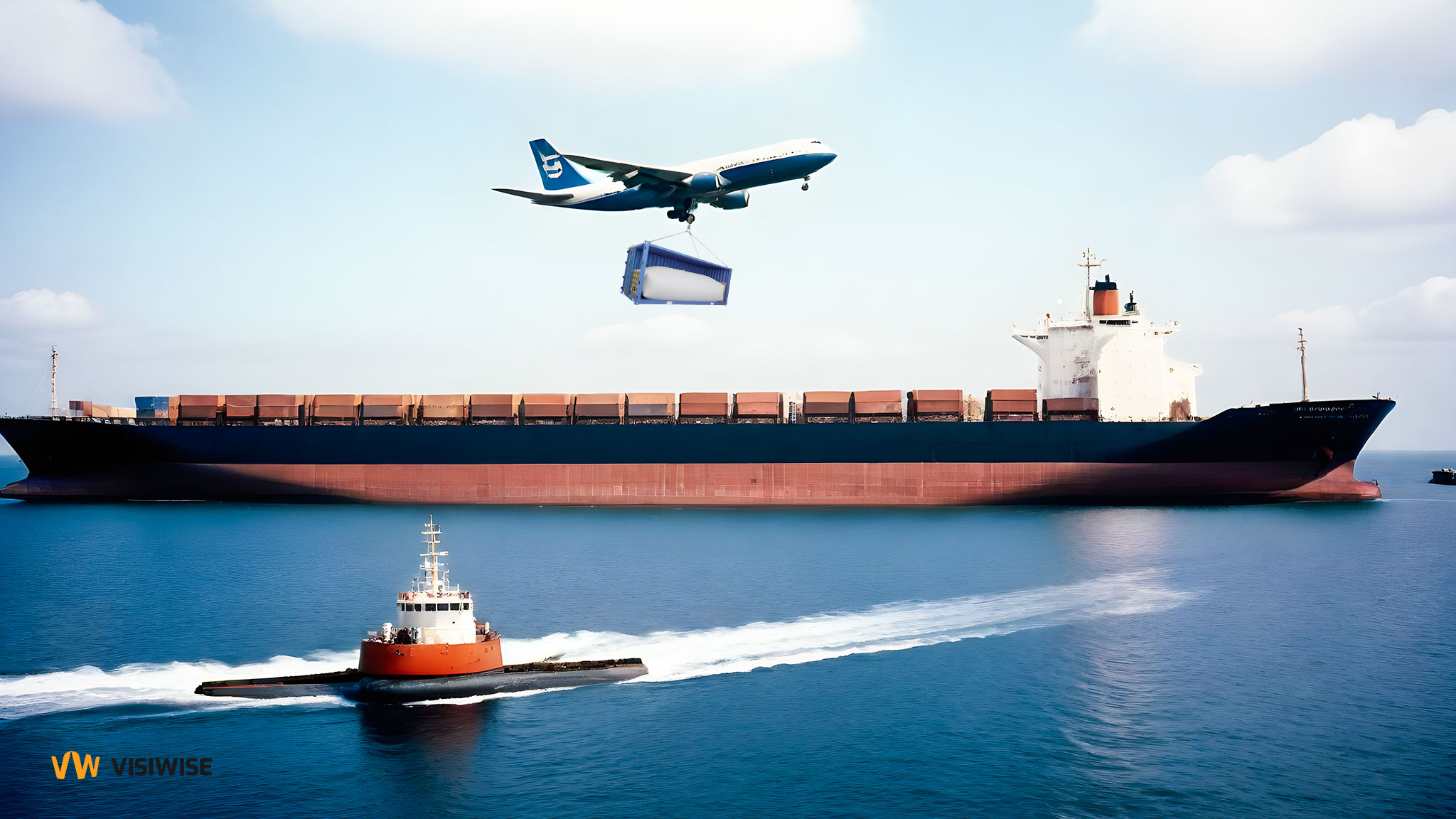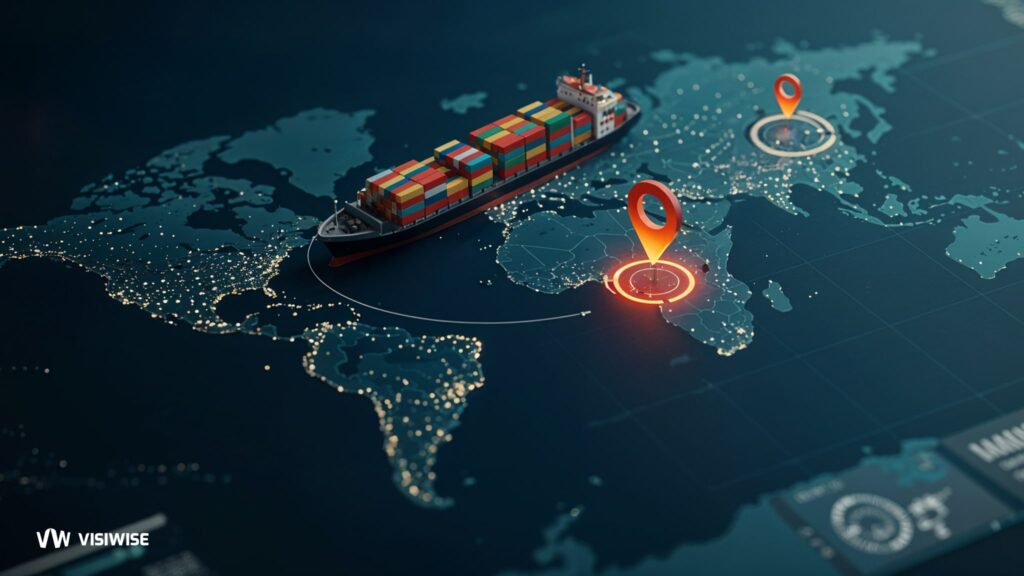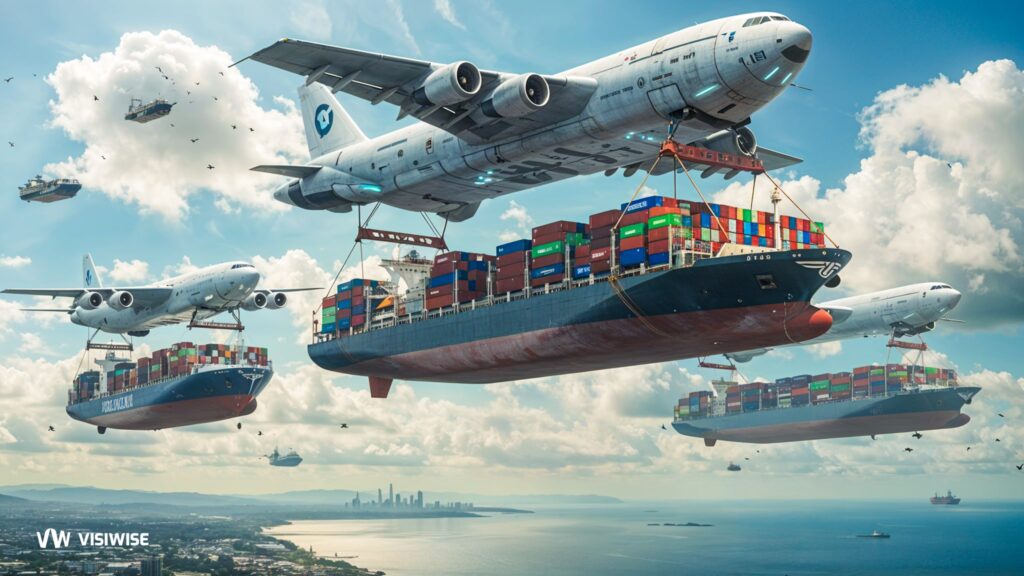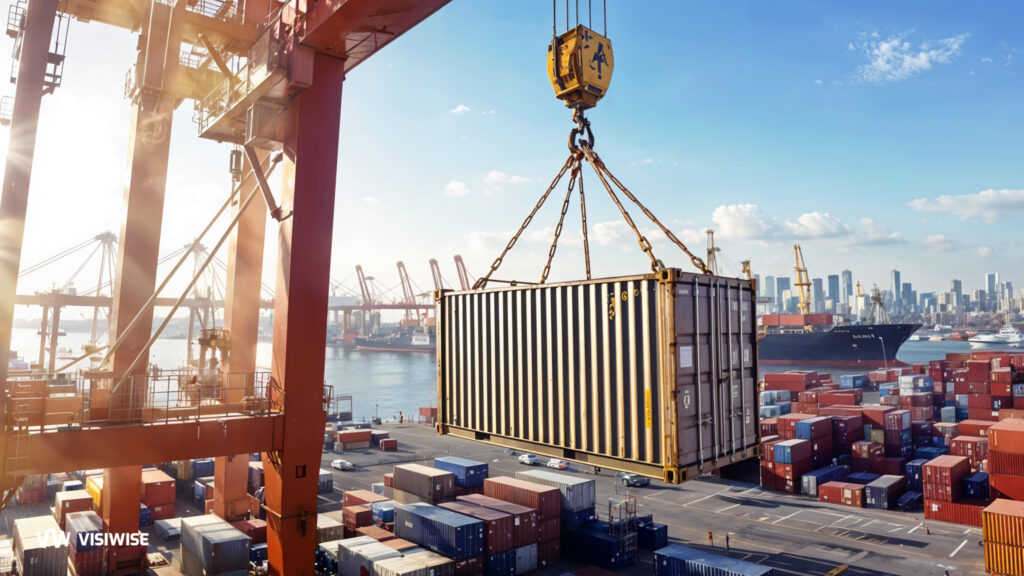The concept of the flexitank emerged during the 1970s to address the logistical challenge of transporting liquids within standardized containers. This innovation diverged from the original intent of ISO containers, which were primarily engineered for dry general cargo. Liquids present unique challenges as they lack internal friction, allowing pressure to exert equal force in all directions. Consequently, accommodating the friction between the container floor and dry cargo is fundamental for stabilizing the container’s structure, including the strength of its walls.
Today, flexitanks serve as a vital solution for transporting a variety of substances, including food additives, wine, latex, vegetable oils, as well as hazardous materials like hydraulic fluids and lubricants.
Why Use Flexitanks?
Flexitanks offer several advantages over traditional methods of liquid transportation, making them increasingly popular in the market.
Cost Effectiveness
Manufacturers advocate for the higher cost-effectiveness of flexitanks compared to steel drums. A flexitank allows for the transportation of almost 50% more material in a 20-foot container compared to steel drums. Moreover, there are no expensive cleaning costs associated with flexitanks, unlike tank containers.
Logistical Flexibility
The availability and logistical flexibility achieved by using flexitanks in standard containers surpass that of tank containers. This heightened flexibility enhances the attractiveness of flexitanks in the transportation industry.
Evolution of Flexitanks
Initially, simple plastic bags were used for flexitanks, but since the 1990s, PVC flexitanks have become more prevalent. The breakthrough occurred in 2001 with the development of multi-layered polyethylene bladders, significantly enhancing performance and reliability. Over time, the cost of flexitanks has decreased considerably, with single-use products now being the norm.
Increased Capacity and Challenges
Flexitanks were initially designed for a capacity of approximately 16,000 liters, with relatively low damage frequency. However, cost pressures in logistics have led to an increase in capacity, with flexitanks now reaching up to 28,000 liters. This expansion has resulted in a rise in the number of claims and greater loss amounts for equivalent products.
Growth Trends
Before the onset of the COVID-19 pandemic, the use of flexitanks nearly tripled between 2010 and 2019, indicating significant growth in the industry. Forecasts suggest that these growth rates will likely continue in the medium term.
What Is a Flexitank Made Up Of?
A flexitank container is a bulk liquid storage tank comprised of several layers of polyethylene with a woven polypropylene outer covering. These containers are manufactured using various materials, including:
- Multilayer polyethylene
- Single and double-layer polyethylene
- Barrier tanks
- PVC
- Bottom discharge
What Do Flexitanks Ship?
Flexitanks are versatile for shipping various types of liquids, both edible and non-edible. SIA Flexitanks are specifically manufactured from layers of FDA-approved polyethylene film, ensuring compliance with international standards for contact with food and non-hazardous free-flowing bulk liquids. Some examples of liquids that can be transported in a flexitank include:
- Food-grade liquids: Such as edible oils, juices, wines, spirits, syrups, and liquid sweeteners.
- Non-edible liquids: Including industrial oils, lubricants, chemicals, pharmaceutical liquids, and non-hazardous liquid additives.
These flexitanks are designed to meet stringent quality standards, including those set by the US FDA, German BGA, and the Japanese Canning Authority, ensuring the safe and efficient transport of liquids across international borders.
Advantages of Using Flexitanks
- Flexitank serves as an alternative to tank-containers, railway or road tanks, drums, IBCs, and other types of packaging.
- Significantly reduces transportation expenses. Compared to tank-containers, you only pay for one-way freight of the 20-foot container, eliminating the need for container return fees.
- Acts as cost-effective packaging for cargo, saving approximately 30-40% compared to drums or other capacities.
- Reduces stuffing/unstuffing time by up to 90%.
- No need for cleaning after transportation as Flexitank is disposable.
- Minimizes cargo losses during unloading to 0.1%, compared to 1% from drums.
- Increases cargo volume for transportation by up to 30% compared to standard packaging like drums and canisters.
- Offers “door-to-door” delivery without intermediate overloads.
- Requires compliance with COA procedures and guidelines to prevent spillage, leakage, damage, and tainting of vessels and other cargo, reducing cleaning costs.
- Requires special approval and handling instructions for stuffing a container with a Flexitank due to the higher risk of large leakages.
- Acceptance for shipment by Zim is contingent upon receiving all necessary details and documents about the intended cargo and Flexitank package.
- Dangerous cargo is prohibited from being carried in Flexitanks.
- Flexitanks are stuffed in 20’ DV containers only, with only one Flexitank permitted per container.
Flexitanks Disadvantages and Challenges
While flexitanks offer numerous benefits, they also come with several disadvantages and challenges, particularly in terms of regulation, complexity, and environmental impact.
Regulation
The use of flexitanks is scarcely regulated, with the CTU Code primarily offering general, practical advice. Moreover, the CTU Code prohibits the use of flexitanks for hazardous goods, adding a layer of restriction to their application.
Multimodal Transport Considerations
Containers are typically utilized multimodally across various modes of transport, exposing flexitanks to different types of stresses and loads. Flexitanks must withstand these transport stresses, including those encountered during sea, road, and rail transport, as well as cargo transfers.
Greatest Challenges
- Production and Process Errors: Even the smallest errors in flexitank production, installation, or filling can result in total loss.
- Complexity: The use of flexitanks is more complex than often portrayed by manufacturers, requiring careful attention to detail.
- Root Cause Analysis: Identifying the root cause of a claim is challenging, particularly distinguishing between defects caused by transport, inappropriate containers, or inherent product issues (“inherent vice”).
Environmental Impact
Single-use flexitanks pose environmental concerns due to their poor environmental balance. The multilayer construction of plastic foils, which are often of different types, complicates disposal at the destination, resulting in significant waste (often exceeding 100 kg per flexitank).
Loss Profile
The spectrum of losses extends from ruptured plastic bladders and distorted or punctured container walls leading to internal spoilage, to leaks stemming from defective valves or material imperfections in the flexitank. Evidence suggests that even during load tests conducted by flexitank manufacturers themselves, deformations of container walls can occur. Apart from the direct damage to property and merchandise, there’s the additional concern of environmental harm resulting from cargo leaks. Moreover, flexitank leaks pose risks to bystanders either through direct contact with the product or an elevated likelihood of accidents such as slipping or falling. Pinpointing the exact cause of flexitank damage proves exceptionally challenging in most instances, primarily due to the myriad potential sources of defects, sometimes occurring in tandem and potentially involving different processes and parties within the supply chain.
Containers as a Source of Concern
Beyond the frequently questionable quality of flexitanks, a notable drawback of the concept arises from the fact that standard containers were not originally designed to bear such loads. Structural deficiencies, such as insufficient strength in the side and end walls of the container, as well as dynamic loads caused by surge effects, are common issues. The utilization of flexitanks often results in a permanent weakening of the container structure, heightening the risk of goods damage when these containers are subsequently reused. Moreover, this structural weakening of containers is among the potential causes currently under investigation for container losses at sea. Notably, manufacturers explicitly advise the use of new containers for flexitank installation, indicating their awareness of these risks.
Flexitanks as a Source of Concern
During transportation, normal acceleration forces or impact pulses pose a risk of bursting at the seams or valves, leading to product leakage. Additionally, production-related adhesion of film layers may wear through even under standard transport conditions, resulting in leakage known as "leakers" or "drippers." The aseptic filling of food into flexitanks often involves thermal sterilization of the supply line and valve exteriors with steam. The high temperatures during this process can weaken the structural integrity of the valves and the immediate surrounding material of the flexitank.
Fitting as a Source of Concern
The proper fitting of a flexitank relies on the suitability of the container. The container must be undamaged, clean, odor-free, and devoid of sharp edges or remnants of previous load-securing equipment (such as nail heads). Failure to meet these criteria foresees damage to the fitted flexitank and its contents, including puncturing, fraying, or contamination. Typically, the floor and side walls are lined with cardboard or plastic up to a certain height to offer additional protection for the outer film layers of the flexitank.
Load Securing as a Source of Concern
Freight containers are engineered for form-fitting load securing, distributing volume homogeneously or directing securing forces into corner posts. Consequently, the lashing points in containers are typically designed for lighter loads, around 1 tonne, rendering them insufficient for securing the mass of a flexitank. This inadequacy is particularly pronounced in newer models of freestanding flexitanks not affixed to container walls. Given the lack of load securing within the flexitank itself and the strain imposed on end and side walls by the flexitank’s weight, it’s objectively challenging to secure the load in a manner compliant with the CTU Code. If the flexitank shifts within the container, it poses risks to both its contents and personnel opening the container. Hence, certain flexitank models mandate the installation of a safety bulkhead on the door side of the container.
Recommendations When Using Flexitanks
For optimal transport and product safety, priority should be given to the use of tank containers. However, if flexitanks must be utilized, several considerations must be observed:
- Certification of Flexitanks: Utilize only flexitanks certified by the Container Owner Association (COA), available at this link . This certification includes shock tests on railway cars.
- Adherence to Code of Practice: Adhere to the COA “Code of Practice for Single-use flexitank Systems.” must be complied with.
- Avoidance of Risky Usage: Avoid using flexitanks for hazardous substances, very expensive products, or materials that pose a danger to the environment or human health.
- Consideration of Thermal Limits: Consider the flexitank’s load limits regarding maximum temperatures during sterilization processes to prevent thermal distortion on the flexitank and/or valve.
- Testing for Suitability: Test the flexitank for cleanliness, odors, and suitability for the respective product, considering product density and total mass resulting from it.
- Usage of Undamaged Containers: Use only undamaged or new containers, as explicitly required by some flexitank manufacturers.
- Pre-Installation Inspection: Prior to installing the flexitank, thoroughly inspect the container’s interior for sharp edges, nails, or any defects that could damage the flexitank.
- Trained Personnel for Fitting: Ensure fitting is conducted by trained personnel familiar with the specific model and the manufacturer’s fitting instructions.
- Documentation of Fitting Process: Document the flexitank fitting process step by step, retaining documentation until reaching the destination.
- Wrinkle-Free Installation: Ensure the flexitank is free of wrinkles when empty before fitting it on the floor area.
- Enhanced Safety Measures: Install a door bulkhead with most models to enhance safety.
- Optimal Filling Levels: Maintain the flexitank’s filling level between 80% and 95% to minimize surge effects and prevent overloading.
- Valve Testing and Sealing: Test the valves for tightness before and after filling, disinfecting them if applicable for the product, and seal them properly.
- Recommended Transport Limits: Based on an investigation by DNV GL commissioned by the German Insurance Association, it is recommended to use flexitanks for transport amounts of a maximum of 18 tonnes.
- Clear Container Marking: Clearly mark the container on the outside as “flexitank inside” and inform the carrier explicitly about the intended use of a flexitank.
- Single-Use Precaution: Avoid reusing single-use flexitanks to ensure safety and effectiveness.
- Detailed Instructions: Develop and implement detailed written work instructions for the fitting, filling, and use of flexitanks.
- Continuous Improvement: Implement a “lessons learned” system to continually improve flexitank handling and procedures.
- Pre-Transport Testing: Before using flexitanks with a particular product on a specific transport route, conduct a test filling and, if necessary, a test transport to ensure suitability and safety.
Technical info
Material Composition:
Flexitanks are typically made of multiple layers of polyethylene (PE) or ethylene-vinyl acetate (EVA) film, which provide strength, flexibility, and chemical resistance.
Some flexitanks may feature additional layers such as barrier films to prevent oxygen or moisture ingress, or aluminum foil layers to preserve product quality.
Capacity:
Flexitanks come in various capacities, typically ranging from 16,000 to 24,000 liters (approximately 4,200 to 6,300 gallons).
The capacity depends on the size and dimensions of the standard shipping container in which the flexitank is placed.
Construction:
Flexitanks are constructed to fit inside standard 20-foot or 40-foot shipping containers.
They are designed with integrated valves for filling and emptying, as well as additional fittings for ventilation and pressure relief.
Compatibility:
Flexitanks are compatible with a wide range of non-hazardous liquids, including food-grade liquids (such as edible oils, juices, and wines) and non-edible liquids (such as industrial oils, chemicals, and lubricants).
Compatibility is determined by factors such as the material composition of the flexitank and the nature of the liquid being transported.
Testing and Certification:
Flexitanks undergo rigorous testing to ensure compliance with international standards and regulations for the transportation of liquids.
Common certifications include ISO 9001 (quality management), ISO 22000 (food safety management), and COA (Container Owner Association) certification.
Installation and Handling:
Flexitanks are typically installed and filled at the point of origin by trained personnel.
Proper handling and installation procedures must be followed to prevent damage to the flexitank and ensure safe transportation of the liquid cargo.
Overall, flexitanks offer a cost-effective and efficient solution for transporting bulk liquids, providing versatility, reliability, and ease of use in various shipping applications.
Summary
The global adoption of flexitanks is on the rise due to the cost advantages they offer. However, from a risk standpoint, the utilization of flexitanks is only viable when all organizational, technical, and structural requirements are meticulously met. Given the intricate nature of the processes involved and the absence of centralized responsibility among stakeholders, this poses a significant challenge. Experience has shown that meeting this challenge is often difficult due to the elevated likelihood of errors in container selection, fitting, or the filling of flexitanks.
Flexitanks are inherently associated with a higher risk of losses, despite the implementation of aforementioned preventive measures. Even with these measures in place, the risk remains substantially higher compared to tank containers.



